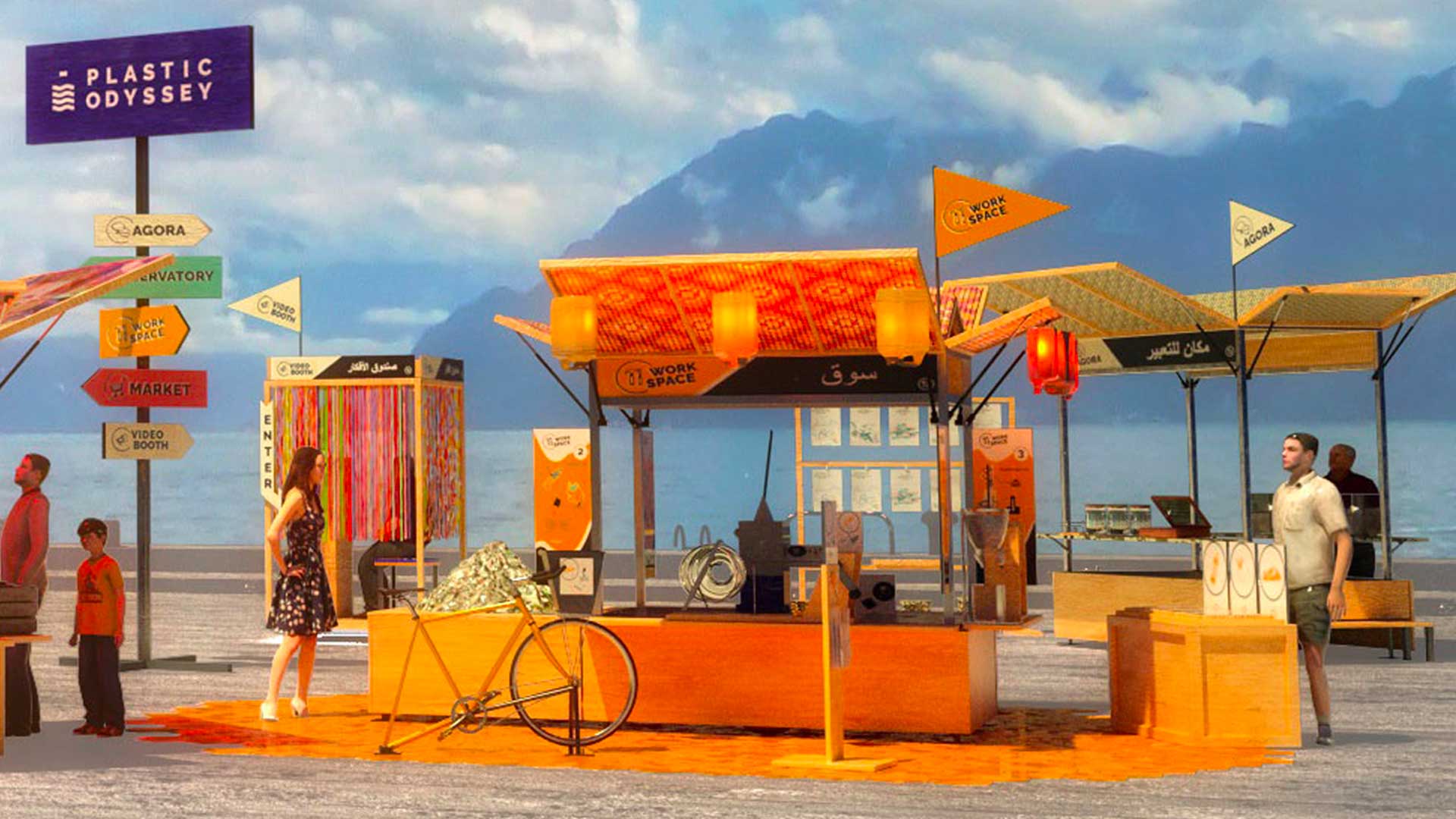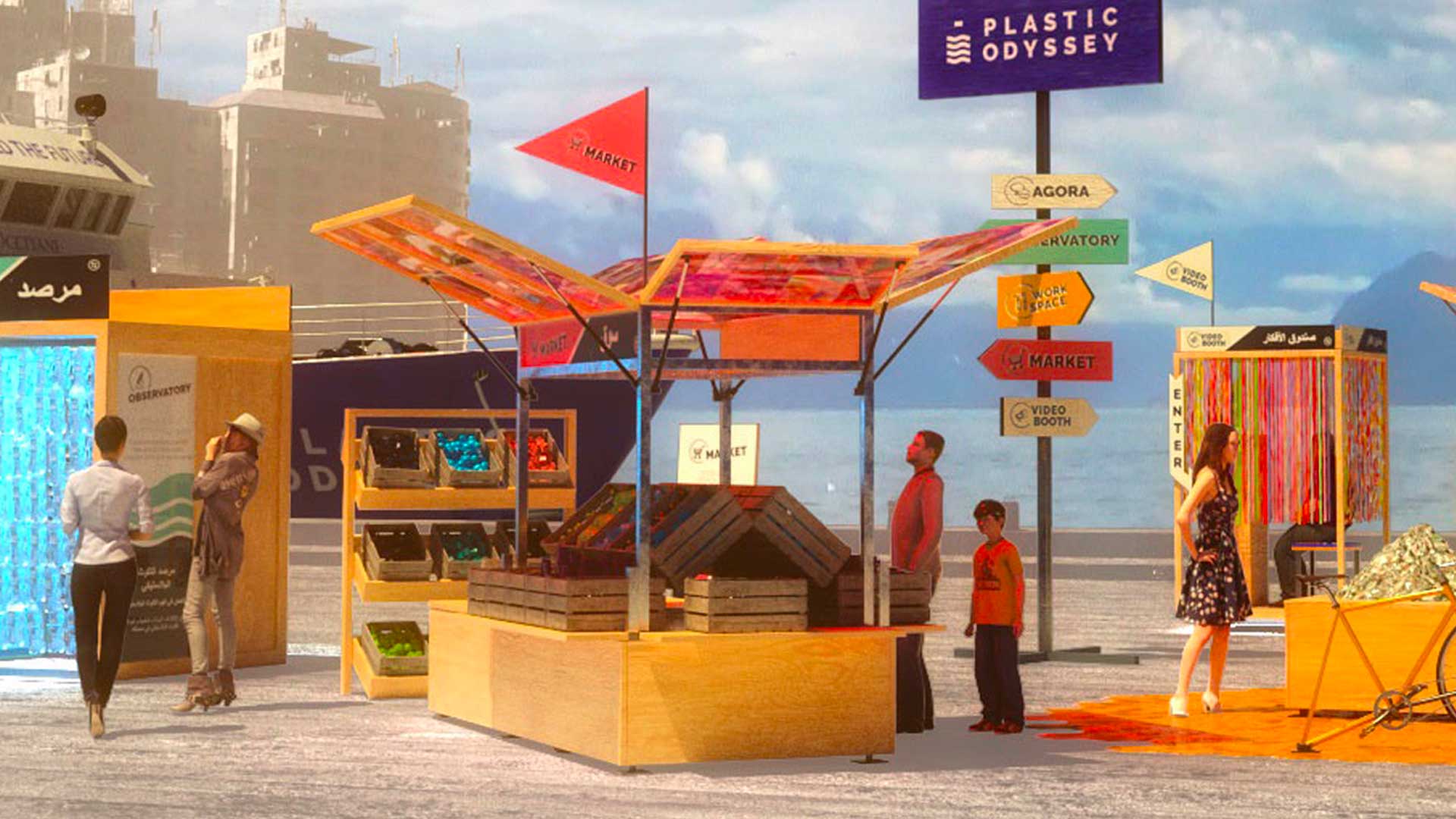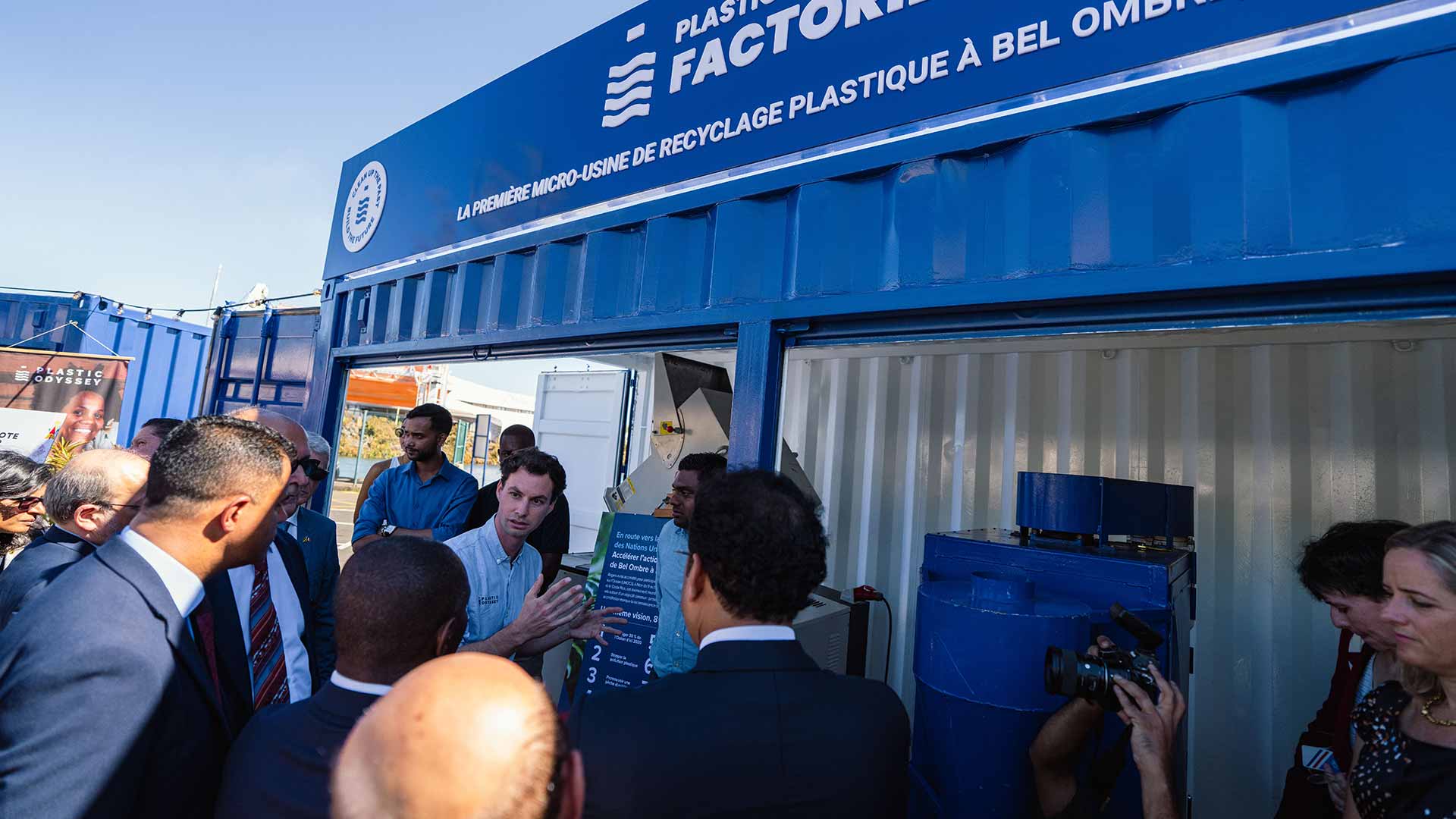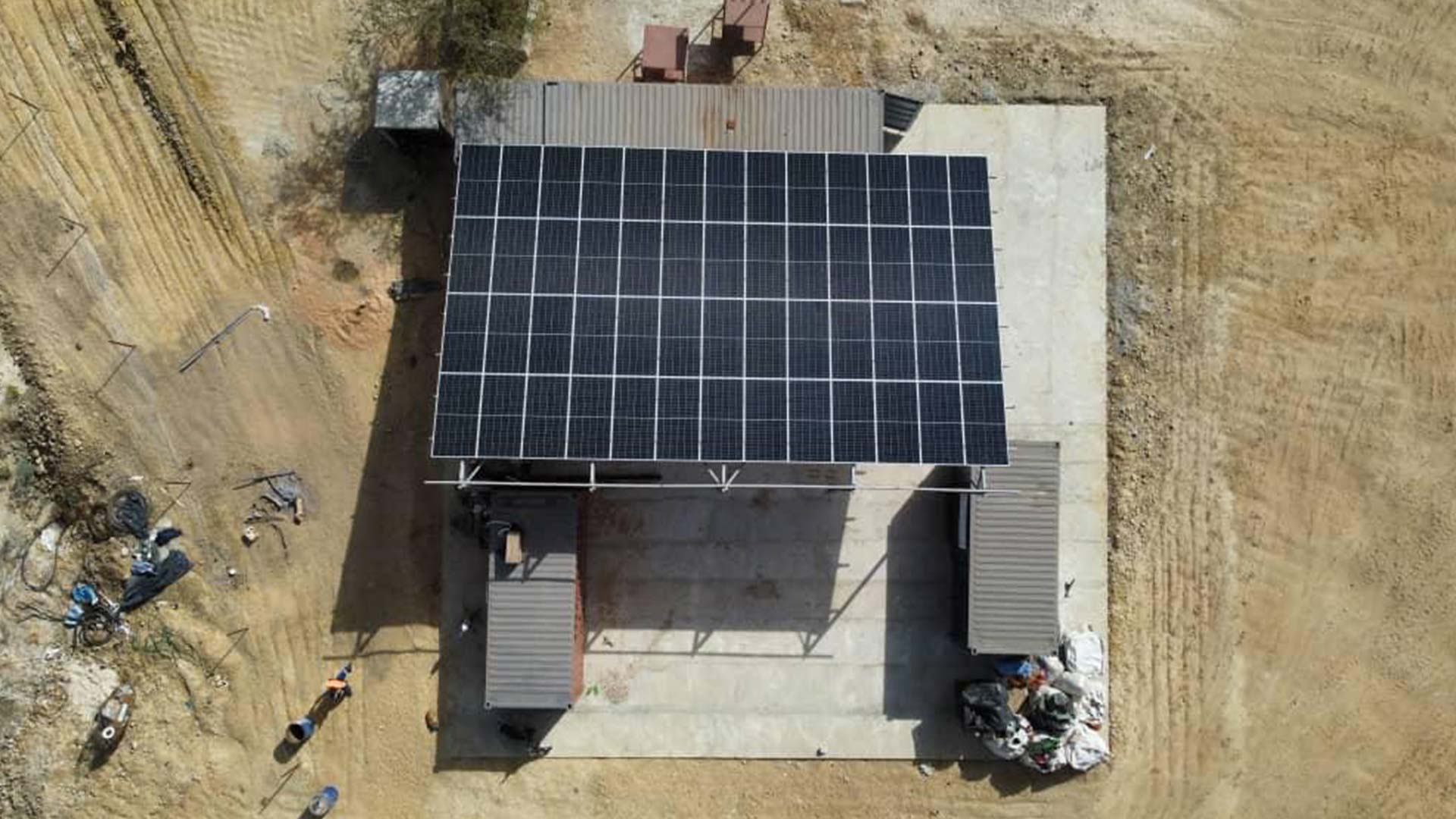
A Mobile Space Dedicated To The Observation of Plastic Pollution
The Observatory is a mobile space that contains popularized scientific data, and tools for individuals to observe the surrounding plastic pollution. It will travel from town to city, across 3 continents, to share knowledge about plastic pollution with a diversity of people around the world.
An itinerant awareness-raising space to link local pollution and global impact.

The Observatory is a small mobile container carrying popularized scientific data and tools for experimentation. It will travel from town to city to encourage citizens in areas most affected by plastic pollution, to make a difference.
Participatory Science System
Provision of observation tools and samples of polluted water from all over the world, for one’s observation of the pollution of water by micro-plastics.
Life cycle of plastics
Computer graphics highlighting different stages in the plastic’s life, from the oil well to the shop shelves, to finally ending up in the Ocean.
Plastic never disappears. It is simply invisible to the naked eye.
Information on everyday single-used plastic’s durability and its very long (or even impossible) degradation in nature. Those include plastic bags thrown away as soon as they come back from the market, straws discarded once drinks are finished, or even cigarette butts consumed during only a few minutes. These will all take hundreds of years to disappear.
Dissection of An Ordinary Plastic Waste Product
Tube of toothpaste, a packet of crisps, food tray: the display of “cups” of ordinary waste, to highlight the different layers of which they are composed, and therefore their challenging recyclability.
Air, water, soil: plastic can penetrate anywhere.
Scientific information on how air, water, and soil are contaminated, as well as concerning concrete consequences for biodiversity and human health.
Latest News
Local Factories: A New Plastic Waste Recycling Unit Installed in Mauritius
Plastic Odyssey, in partnership with Rogers Group, has inaugurated the first plastic recycling unit in Mauritius: a micro-factory capable of processin...
Hackathon with École Polytechnique de Thiès: Innovating for the Dakar 2026 Youth Olympic Games
As part of the “SUNU Plastic Odyssey” project supported by the French Embassy in Senegal, Plastic Odyssey and the Ecole Polytechnique de Thiès ha...
Local Factories: A New Plastic Waste Recycling Unit in Saint-Louis, Senegal
As part of the "SUNU Plastic Odyssey" project supported by the FEF (French Embassy Fund), Plastic Odyssey and BANCO have joined forces to deploy a rec...





